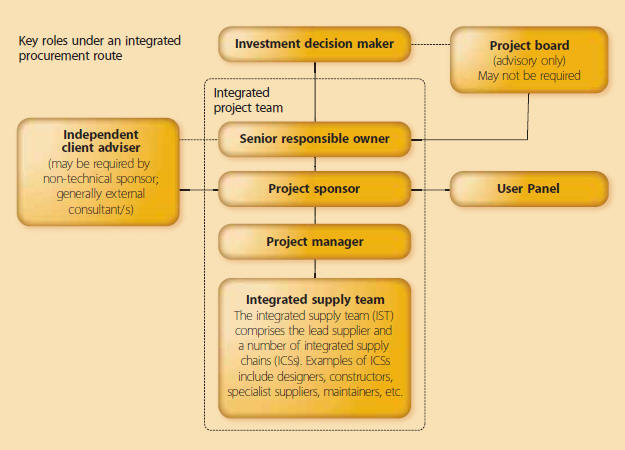Client for building design and construction
The CIOB Code of practice for project management (4th edition), defines a client as the 'Entity, individual or organisation commissioning and funding the project, directly or indirectly.'
The client is also sometimes referred to as the:
The client is rarely a single person, even on relatively small projects. Within the client, there are likely to be a number of groups and individuals with an interest in, or control over the project.
| PRIVATE SECTOR | PUBLIC SECTOR |
| Main board of directors. | Investment decision maker (IDM). |
| Project director. | Senior responsible owner (SRO). |
| Board representative. | Project sponsor (PS). |
| Project board. | Project board. |
| User panels. | User panels. |
| Champions (perhaps heads of department). | Champions. |
| Project manager. | Project manager. |
In addition, there may be a number of external stakeholders with an interest in the project.
It is important that the allocation of responsibilities between members of the client team is clearly defined.
For smaller or less complex projects, some roles may be combined. However, on public projects it is not good practice to combine the roles of investment decision maker, senior responsible owner and project sponsor because of the risk of a conflict of interest. Roles that do not overlap should not be combined.
On public sector projects, OGC guidance shows the relationship between the client and the integrated supply team (designers, suppliers, contractors) as illustrated below [image reproduced with permission from OGC].
NB: The Office of Government Commerce (OGC) was absorbed into the Efficiency and Reform Group (ERG) within the Cabinet Office and it's guidance archived, however, much of the same terminology and procedures are still used in public sector procurement.
Client champions may be identified and given ownership of specific components of the project. This could include a champion for the vision, for change management, for communications, and so on. These champions may need input and assistance from many other individuals throughout the client organisation. In encouraging this input it is vital that people understand the project's significance its potential impact on their future.
For many of those involved, the project will be a ‘parallel activity’ carried out in addition their day job. This means that their individual goals need to be re-aligned to include the project goals, and rewards for individuals need to come out of project success, rather than just being linked to their normal day job. Because of this additional role, they may need extra support and guidance to help them to focus on the key issues and to make best use of their time.
Inexperienced clients might benefit from appointing independent client advisers to help them structure the project, prepare a business case and strategic brief and to appoint consultants.
The CDM regulations define 'domestic clients' as '... people who have construction work carried out on their own home, or the home of a family member that is not done as part of a business, whether for profit or not.'
NRM1: Order of cost estimating and cost planning for capital building work, gives the following definition of the employer; ‘…the owner and/or the developer of the building; in some cases the ultimate user. The terms Senior Responsible Owner (SRO) and Project Sponsor are used by central civil government and the defence sector; being the representatives empowered to manage the building project and make project specific decisions.’
An intelligent client is a client that '...has experience of and the necessary expertise to conceive, develop and deliver a construction project for the optimum combination of time, cost and quality.' Ref Guidance for public sector contracting authorities on the procurement of construction works, published by the Scottish Procurement and Property Directorate on 21 Dec 2018.
NB In the case of subcontracts, the main contractor may sometimes be referred to as the client or employer.
In the context of the UK Building Safety Act, the client refers to the individual or organisation responsible for initiating and commissioning a construction project involving a building, as well as a higher-risk building. The client plays a central and critical role in the development and delivery of the project, providing the necessary resources, direction, and decision-making authority throughout the project lifecycle.






